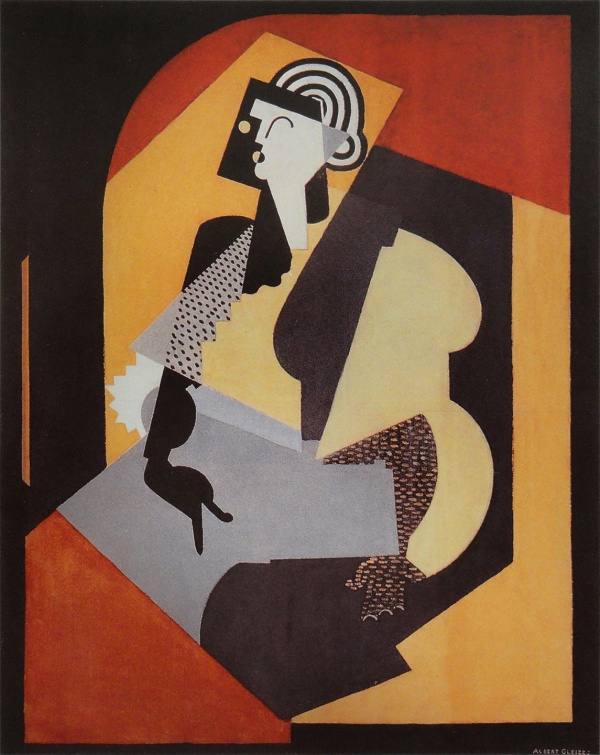Facts About Woman with Black Glove
"Woman with Black Glove" is a captivating painting by the French artist Albert Gleizes, who was also a theorist and writer. Created in 1920, this artwork epitomizes the Crystal Cubism phase, marking a departure from the earlier, more fractured stage of the movement. The piece is notable for its flat surface dynamics and the use of expansive, overlapping geometric planes.
Gleizes was particularly prolific in the early 1920s, producing several smaller versions of "Woman with Black Glove." These works reflect his dedication to capturing specific realities within meticulously structured compositions. The painting premiered at the Salon d'Automne in Paris in 1920 and has since been featured in numerous publications.
In "Woman with Black Glove" a woman is portrayed wearing a black glove, seated at an angle and facing left. Her features are simplified into geometric shapes, and her hair is stylized into concentric circles. The color palette comprises a mix of warm tones such as red, yellow, and brown, contrasted with cool shades of gray. Unlike traditional paintings that employ chiaroscuro to create depth, this composition emphasizes flat surfaces and geometric forms, hallmarks of Crystal Cubism.
During this period, Gleizes' work was characterized by dynamic intersections of various artistic movements, leading to the development of Crystal Cubism. He articulated his artistic vision and methodology in his writing, particularly in "La Peinture et ses lois" where he outlined the principles of abstract art. Gleizes was keen on using geometric structures to create a sense of unity in his compositions.
One of Gleizes' key techniques was the deliberate elimination of visible brushstrokes, focusing instead on the arrangement of geometric forms to create a cohesive image. He aimed to replace anecdotal details with formal elements like line, form, and color. His method involved translating and rotating shapes to construct paintings that were free from emotional influences.
Gleizes emphasized the importance of working within the two-dimensional surface of a painting, rather than attempting to transcend it. He viewed Cubism as a scientific approach that offered an alternative to traditional one-point perspective, guided by fundamental elements.
